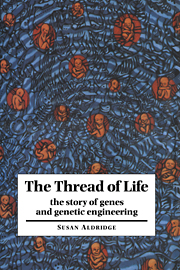3 - A close up of the genome
from PART I - What is DNA?
Published online by Cambridge University Press: 16 March 2010
Summary
The sum total of the DNA in an organism is known as its genome. Although DNA was discovered within the nucleus, this is not the only place where it is found in cells. Some cells do not even have a nucleus.
As far as molecular biology is concerned the distinction between having a nucleus and not having one turns out to be rather important, and is used for classifying organisms at a cellular level. A daisy and a giraffe have hardly anything in common as far as outward appearance is concerned, but to a molecular biologist they are similar because they are both made of cells that have nuclei.
Organisms like this are called eukaryotes. Their DNA is found in the nucleus, but also in cellular structures called mitochondria and chloroplasts. These are the sites of important biochemical activity. Energy production takes place in mitochondria, while the synthesis of glucose from carbon dioxide and water in the presence of sunlight (photosynthesis) happens in the green chloroplasts of plant cells. The fact that mitochondria and chloroplasts have their own DNA suggests that they may have been free-living organisms earlier in evolution (the significance of this is discussed further in Chapter 4).
Organisms whose cells do not have a nucleus (or at least not one surrounded by a membrane like the eukaryotic nucleus) are called prokaryotes. Their DNA lies free in the cell, usually in a closed loop. In addition to this, some bacteria contain small circles of DNA called plasmids.
- Type
- Chapter
- Information
- The Thread of LifeThe Story of Genes and Genetic Engineering, pp. 55 - 76Publisher: Cambridge University PressPrint publication year: 1996



